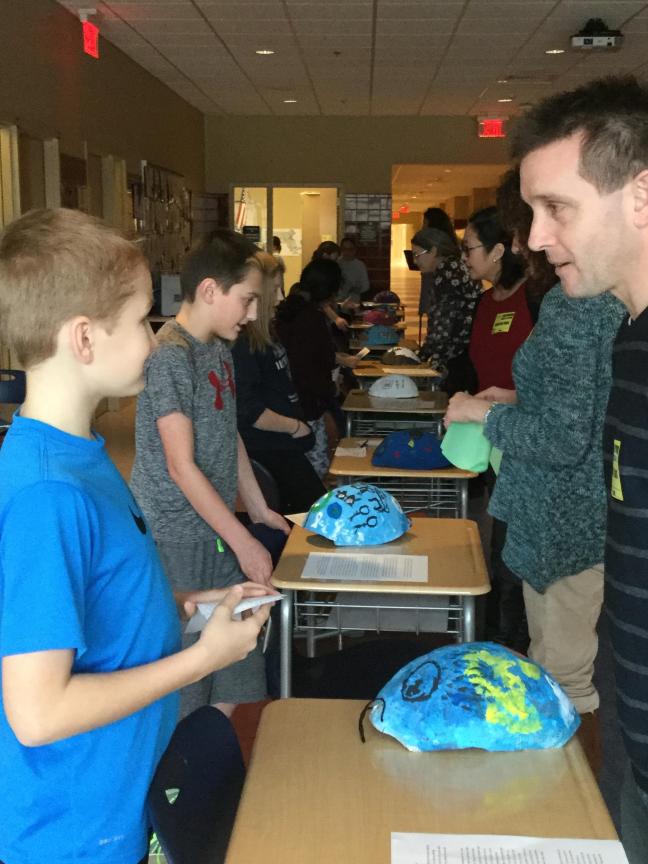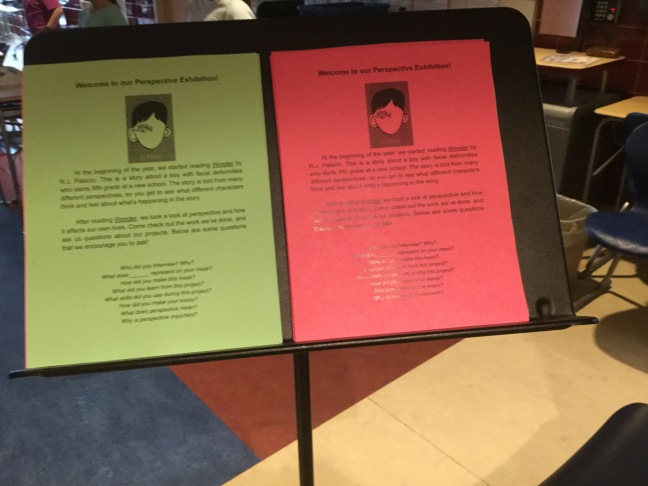Contributing Teachers: Hannah Hopkins, Alicia Tinsley, Lucy Marcigliano
Name of Project or Unit: Wonder Perspective Investigation
Content Area: 5th Grade
 District Goal Strategies Used:
District Goal Strategies Used:
- An open ended question that requires students to think critically about an engaging topic.
- A special introductory event to the learning experience that generates curiosity and motivates students to learn more about the topic.
- Opportunities for students to share their thinking and collaborate with others.
- Work shared with an audience beyond the teacher and the classroom
Project Description:
We started this unit by reading Wonder, by R.J. Palacio. While reading this book, we talked about the different perspectives of each character, and how that affects the way the story is told.
After we finished the book, we thought about how perspective affects our own lives. Students brainstormed people from whom they may have a different perspective, and topics on which they might differ. Students chose someone to interview about a specific topic so that they could learn about their perspective. They then collaboratively brainstormed interview questions and interviewed their person to learn their perspective.
After they conducted the interview, we discussed and reflected upon what they learned from hearing someone else’s perspective, how their perspective may or may not have changed (and why), and why it’s valuable to hear someone else’s perspective.
Students wrote essays about the perspectives and reflections. They also created papier-mâché masks with literal or figurative representations of the two perspectives. The project culminated with a Student Exhibition where students explained their masks and essay to teachers, students, and families.

What Worked Well:
Students absolutely had a much deeper understanding of perspective. They were able to articulate the importance of perspective, and how it can affect your thoughts, feelings, and actions. The masks allowed them to think about figurative representations of feelings or concepts.
Because of the Student Exhibition at the end, the presentations were especially successful. Students took ownership of their work and were able to clearly explain their learning, as well as the learning process.

Challenges:
One challenging thing about this unit was curriculum planning. When we thought about the project, we did not think about what we would have to move around or take out to fit this experience in. This is something we would look more at before doing the project again next year. We also had some difficulties with doing this project on inclusion teams. Our inclusion students required much more structure and had trouble with the abstract concepts. We had a lot of discussions about the balance between the student-led elements of PBL, and the required structure for inclusion students (and fifth graders in general). We are continuing to talk about the best way to provide a PBL experience for inclusion students.
How Did You Assess the Project?:
We graded the essays and found that students had a much greater understanding of perspective. They also had detailed and well-explained paragraphs. In the future, we may think about building a rubric to grade the masks as well.

